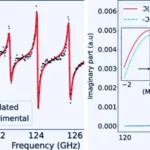Key Points
- Researchers from Ateneo de Manila University investigated how the carbon content in silicon carbide (SiC) impacts its mechanical properties.
- SiC is used in electronics, space, and nuclear industries due to its semiconductive and insulative properties.
- The study found that increasing carbon content up to 25% improves SiC’s stiffness, strength, and toughness.
- The researchers recommend further studies using real SiC samples and exploring the effects of temperature on its properties.
New Ateneo de Manila University research may lead to more durable silicon carbide (SiC), a ceramic material known for its semiconductive properties and applications in electronics, space exploration, and nuclear reactors. SiC is abundant in space, found in meteorites and stardust around carbon-rich stars, but is rare on Earth. Due to its valuable properties, SiC is artificially produced in large quantities for industrial use. The research was published in the Japanese Journal of Applied Physics.
Silicon carbide, made from silicon and carbon, boasts semiconductive and insulative properties, making it ideal for use in everything from computer chips to heat shielding in spaceships and nuclear reactors. However, the material’s brittleness, determined by the ratio of silicon to carbon, can affect its performance and limit its applications.
The research team from Ateneo de Manila University, composed of Clint Eldrick Petilla, Catherine Joy Dela Cruz, and Christian Lorenz Mahinay from the Department of Physics, investigated how varying the carbon content of Silicon carbide impacts its mechanical properties. The study specifically examined factors such as elastic modulus (a material’s stiffness), tensile strength (the amount of force it can withstand before breaking), yield strength (the point where it becomes permanently deformed), and toughness (the ability to absorb energy before fracturing).
Using computer simulations with the Large-scale Atomic/Molecular Massively Parallel Simulator (LAMMPS) software, the researchers found that increasing the carbon content in SiC improved its mechanical properties up to a point. The optimal performance was achieved at 25% carbon content, where SiC displayed maximum stiffness, strength, and toughness. However, exceeding this threshold caused the material to weaken.
While these findings offer promising insights, the researchers stressed the need for further studies using actual Silicon carbide samples to validate the computer simulations. They also suggested investigating how other parameters, such as high temperatures, might affect the mechanical properties of SiC. The study opens the door for enhancing SiC’s durability, making it even more versatile for applications in high-tech industries.









